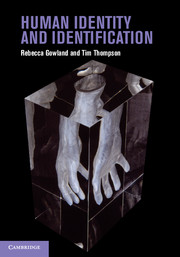4 - Blood and guts
Published online by Cambridge University Press: 05 February 2013
Summary
Everything seems so lovingly packaged and arranged, like a cabin trunk stowed against breakage with just those items necessary for the voyage.
(Dibdin, 1992: 99)While the skin provides the outward-facing surface and is, therefore, a greater contributor to external interpretation of our bodies, many components of our hidden internal bodies are also significant in terms of our identity. From horror films to medical exhibitions, inner organs, blood and guts have been exposed to the general public as never before. And yet the sight of these structures continues to provoke strong reactions – particularly when displaced from the body’s familiar container of skin. Advances in medical technology such as CT and MRI scans now mean that the internal workings of the human body can be visualised without the need to transgress or pierce the skin. Thus identification of the living is no longer confined to their external phenotype. New biometric and imaging techniques for the identification of individuals have been developed due to the desire to defend against threats to security, whether on a personal, corporate or national level. Here we discuss some of the internal structures, substances and soft tissues most frequently harnessed for the purpose of human identification, including the vascular system, blood, eyes and body fat. We discuss each of these in relation to their perceived connection to social and group identity. In the final section, we consider the transplantation of organs and its impact on human identification analysis as well as on the identity of both the donor and the recipient.
The vascular system
The importance of the vascular system is in maintaining homeostasis through its network of arteries, veins and capillaries (Pugsley & Tabrizchi, 2000). Although we tend to consider it on its own, it is better to think of it as paired with the lymphatic components (Pugsley & Tabrizchi, 2000) which remove waste products from around the body. As is well established, blood flows from the heart to the lungs to be oxygenated and then is pumped around the body in arteries, arterioles and capillaries and then back to the heart via venules and veins.
- Type
- Chapter
- Information
- Human Identity and Identification , pp. 71 - 101Publisher: Cambridge University PressPrint publication year: 2013



